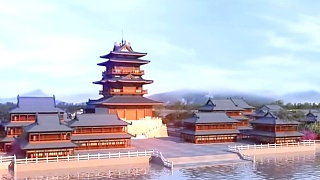 Something different – on humans and the pale blue dot (Earth)
Something different – on humans and the pale blue dot (Earth)
Related Videos
Featured Videos

|
Tachuan is 5 km northeast of HongCun, on the way to HuangShan.
|

|
KāiFēng was once the capital of the Song dynasty, and is one of the Eight Ancient Capitals of China.
Located along the southern bank of the Yellow River, it borders the provincial capital of ZhengZhou to the west.
|

|
With Rafa Goes Around! ...
|

|
A fascinating interview with Afshin Rattansi.
Don't miss it ...
|

|
ShaanXi province.
With Zina ...
|

|
Eating an unprocessed food diet to heal from the inside.
With Eric Berg ...
|
Tag search ?








 Something different – on humans and the pale blue dot (Earth)
Something different – on humans and the pale blue dot (Earth)![`US-sponsored separatist groups, backed by Washington for decades, are being mobilized to attack and undermine activities related to the BeiJing 2022 Olympics, starting with the torch relay in Greece. I explain the background of the “Free Tibet” movement and how the US government, through the CIA, backed it as early as the 1950s and transferred its operations to the National Endowment for Democracy (NED) [or `Dominion` / enslavement]. ` With The New Atlas . . . Bonus films - terror activities by US-backed `opposition` in Myanmar . . . Bonus film 2 - subverting the `left` . . . Bonus film 3 - on Ecuador . . . Bonus film 4 - on Cambodia . . . They say : `How dare you put your face in front of my fist ! Serve your master. Or else. ` More . . . On the US plan to nuke Chinese cities - as revealed by Daniel Ellsberg, famous for the `Pentagon Papers`, with NuMuves . . . On the Falun Gong cult . . . *** Planning war on China - part 11 - don't miss it ***](https://img.youtube.com/vi/2w31eNNcGVU/mqdefault.jpg)






